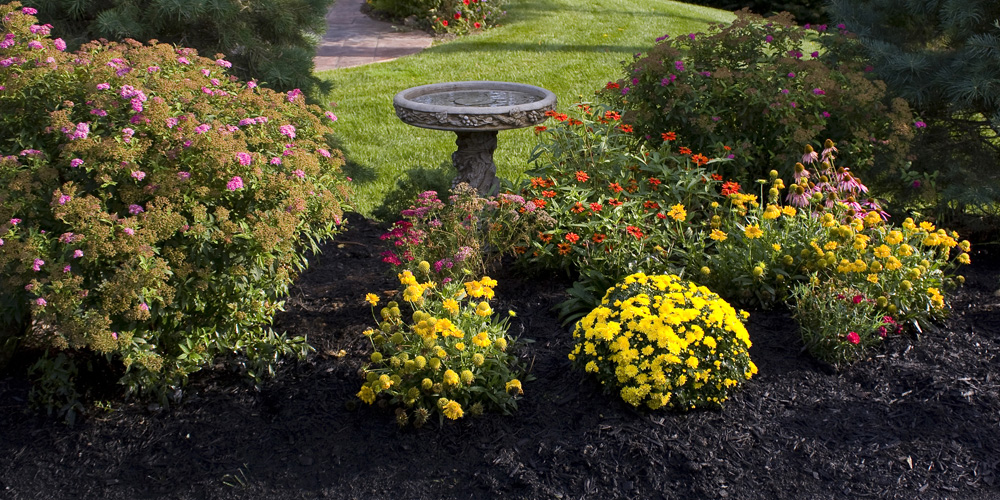Grinding is perhaps the single most important aspect of any mulch production business. After all, if you're not grinding fiber, how are you going to make mulch? To help you build the most profitable operation possible, here's everything you need to know about grinding wood fiber for mulch.
ChromaScape

Recent Posts
Topics: mulch coloring equipment, winterizing equipment, green waste, raw material, mulch size, fiber, grinding equipment
Calculating your labor and loader cost and why it matters
Mulch producers know how important it is to keep an accurate set of books. Like any small to mid-sized business, you need to keep a close eye on your expenses to ensure profitability. But one line item that is overlooked too often is your labor and loader cost. Often considered a sunk cost, understanding what you pay toward labor and loader operations can help shed light on an opportunity to improve efficiency in your mulch yard. Let’s take a closer look at how to accurately calculate your labor and loader costs, and how identifying these costs could help improve financial results for your business.
Topics: mulch colorant, mulch coloring equipment, colorant calibration, green waste
As a commodity product, it can feel like you have little control over the price of your fiber. The construction company, pallet company or brush clearing crew you get your fiber from sets a price and you pay it. There may be some negotiations based on quantity, but that can feel like the only wiggle room you have. Thankfully, there are other ways to think about fiber that can help you save money in the long run. Here are some tips to keep your fiber price in check and ultimately grow profits for your mulch production business.
Topics: mulch colorant, green waste, fiber source, transportation costs
The hidden costs of running a mulch yard and how to control them
To maintain profitability as a mulch producer, you need to carefully track all expenses and keep your costs in check. Most producers have a good handle on fiber and transportation costs. But despite best efforts, there are some costs that often go overlooked by some mulch producers. Here's a look at some of the hidden costs associated with running a mulch yard as well as some tips for how to reduce them.
Topics: mulch colorant, increase profitability, mulch coloring equipment, colorant calibration, water calibration, mulch calculation
In order to keep the finished product up to your standards there are a few things you should verify. Take a moment to consider the following steps. Monitoring these points should help simplify the optimization of your coloring process.
Topics: mulch colorant, raw material, colorant application rates, optimize coloring process, water use rates
Intermediate Bulk Containers (IBCs) commonly know as "totes" are too large to throw away and because they contain chemicals must adhere to environmental regulations. So, how do you get rid of them? Companies like Schuetz offer tote recycling programs that handle all of it for you. But there is one provision, they must be in acceptable condition or it could cost you! Here are the steps to take to properly handle and recycle empty totes.
Topics: tote care, mulch colorant, tote recycling
Everyone wants their landscaping to look amazing. But few people are willing to put in the work. From commercial properties looking to cut costs, to homeowners looking to spend more time in front of the TV, people everywhere want low-maintenance landscaping options. This creates a tremendous opportunity for mulch producers who are able to communicate to customers all the time and cost savings that come with using a quality mulch product. Here are just some of the ways you can do less with more mulch.
Topics: mulch colorant, mulch beds, reduce water rates, low-maintenance landscaping, soil erosion
Why mulch producers should target golf courses
Golf courses present significant opportunities for mulch producers as colored mulch is fast becoming the preferred material for greenskeepers who want to improve aesthetic beauty while conserving water and saving money. To help grow your business, here are some ways to discuss mulch with golf course prospects and clients.
Topics: mulch colorant, golf courses, water conservation
Turning a problem into an opportunity for growth
Woodscape of Utah started as a recycled pallet company and business was good. But they had a problem. The cost of bringing waste to the landfill wasn’t sustainable. They had to find a cost-saving alternative, and after attending several trade shows, they decided to give colored mulch a try. They purchased Amerimulch colorant and ColorTrom coloring equipment from ChromaScape, and it wasn’t long before the orders started rolling in.
Topics: mulch colorant, mulch coloring equipment, woodscape
Water conservation: How mulch creates new opportunities
Topics: mulch beds, reduce water usage rates, increase sustainability











